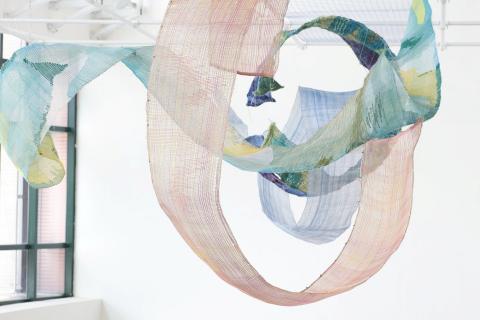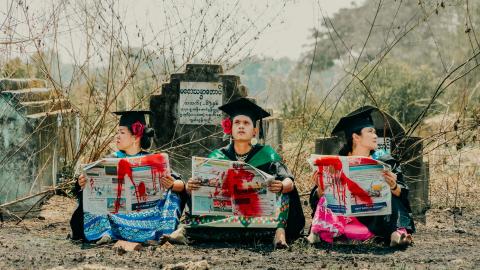Etan Pavavalung
APT10: Between Earth and Sky
Tavadran tribe, Paiwan people
Born 1963, Dashe village, Sandimen, Pingtung County, Taiwan
Lives and works in Sandimen
After Typhoon Morakot devastated indigenous communities in southern Taiwan in 2009, Etan Pavavalung developed a ‘trace layer carve paint’ technique of picture-making as a means of cultural reconstruction. His vibrant compositions on wooden board are rich in Paiwan motifs and narratives, including lilies, which signify beauty and virtue, and the eye totem, symbolising respect and equality. Drawing on the Paiwan notion of vecik — the interconnectedness of all things — the works represent the intangible, and the deeper, spiritual force of poetry and creation.
Pavavalung first used the lily during campaigns for land rights in the early 1990s as an attempt to strengthen cultural identity. In addition to his painterly practice, he is a noted documentarist, co-curates the Greater Sandimen Arts Festivals, and has worked to preserve the Paiwan flute traditions passed down to him from his father. For Pavavalung, ‘There is no written form of the Paiwan language, so art, handicrafts and music are our literature, our forms of expression’.

Etan Pavavalung / Paiwan people / Taiwan b.1963 / The wind blows between heaven and earth 2021 (detail) / Acrylic paint and ink on wooden board / 6 panels, 80 x 240 x 5cm (each) / Purchased 2022 with funds from the Contemporary Patrons through the Queensland Art Gallery | Gallery of Modern Art Foundation / © Etan Pavavalung / Image courtesy: The artist and Taiwan Indigenous Peoples Cultural Development Centre


